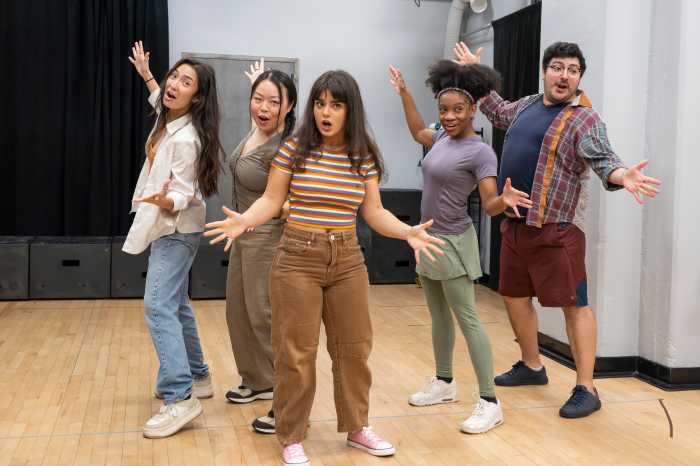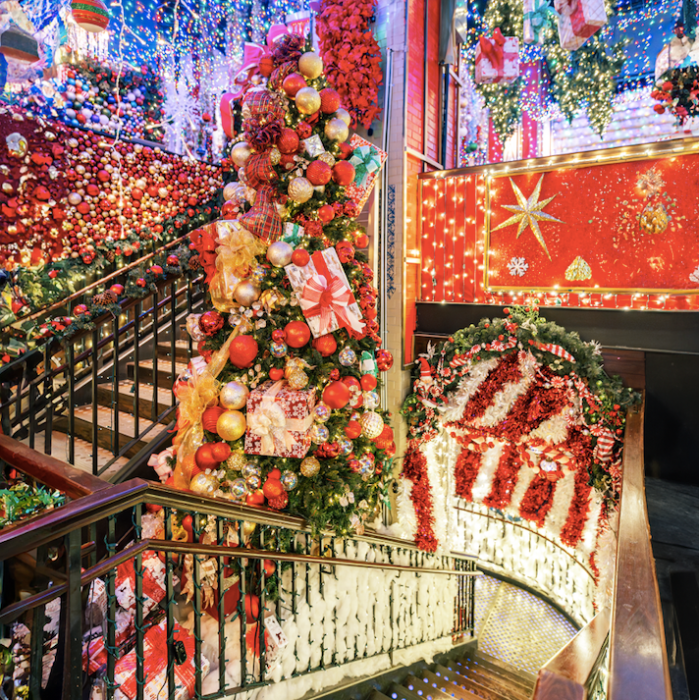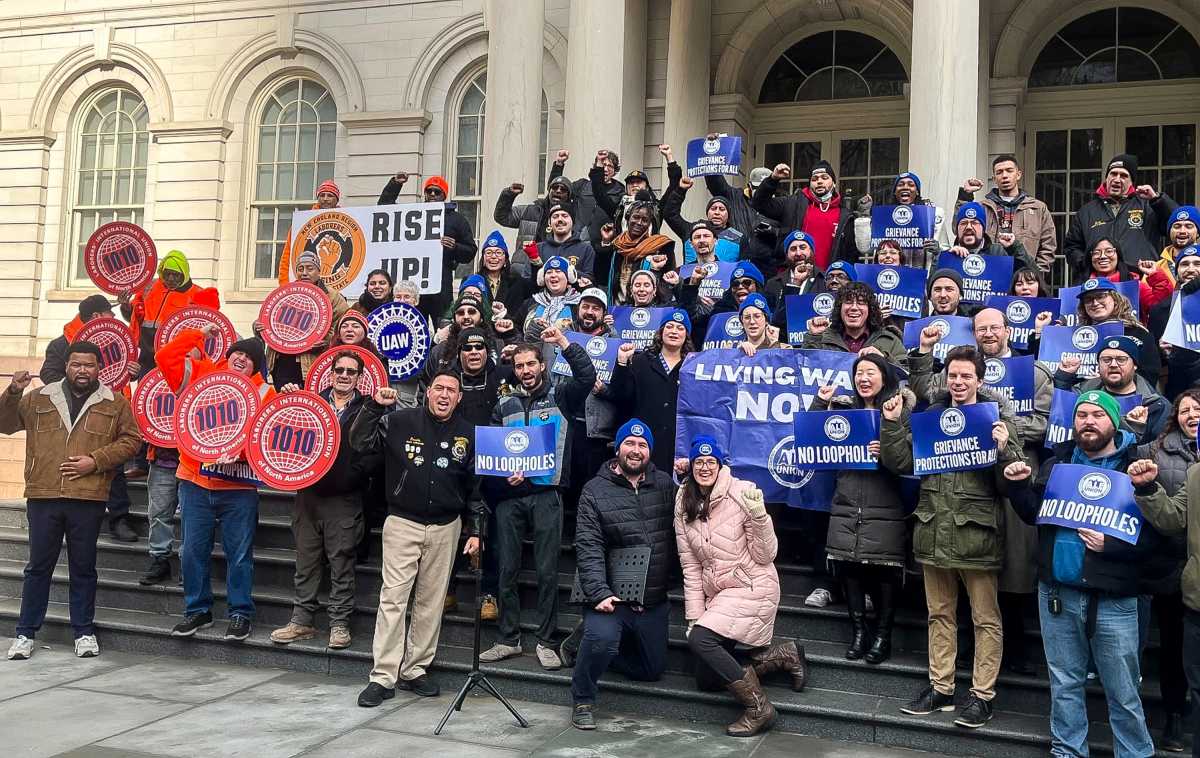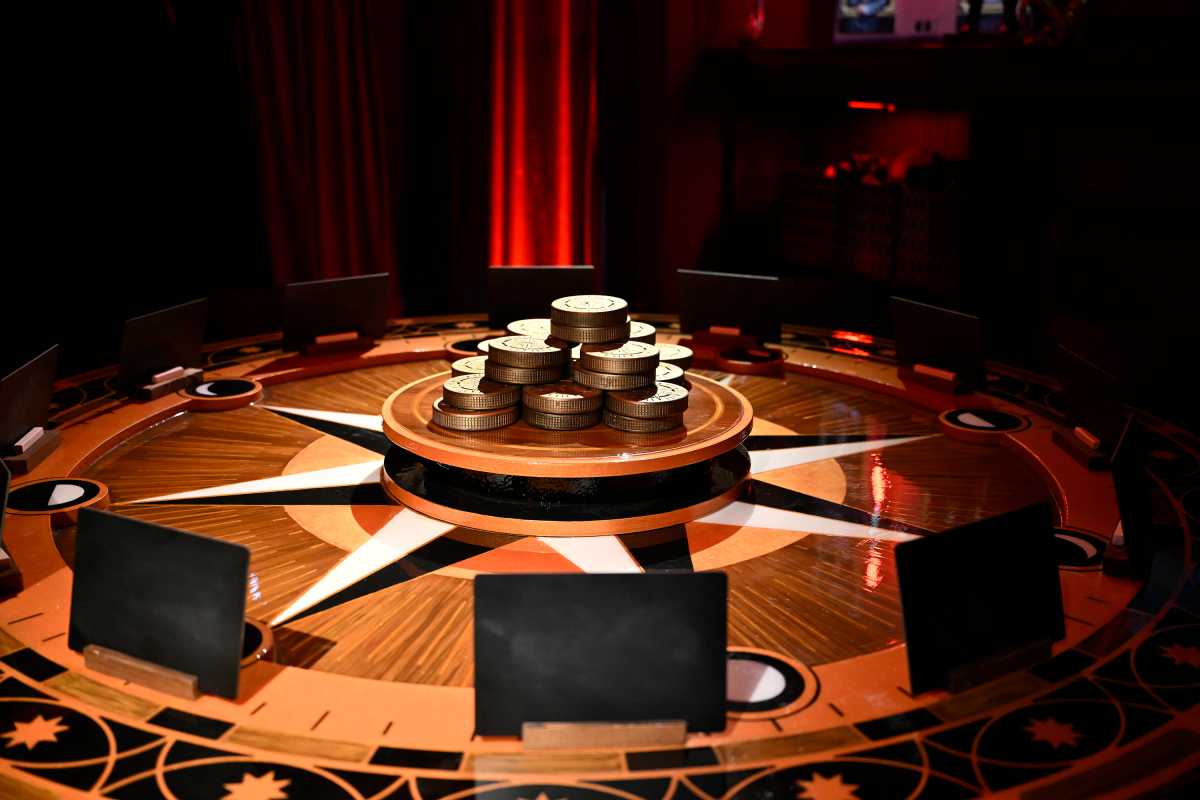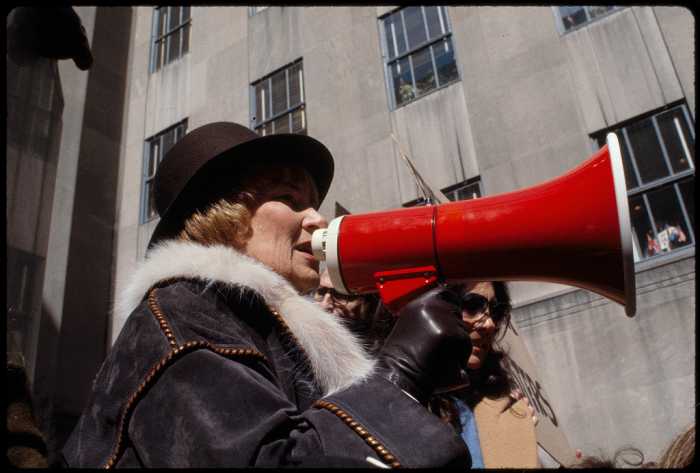Ron English stood in the Time to Be Happy art gallery at 219 Bowery, in Nolita, surrounded by sculptures of some of the hundreds of characters he created. While in museums, you typically aren’t allowed to touch the art, English held a playfully shaped unicorn in his hands that was collectible art or an art toy.
Also known as “designer sculpture,” collectible art toys have developed as a niche art market, including gallery-like stores and gallery shows. English’s show at Time to Be Happy through May 25, is the latest manifestation of the art gallery world meets animation.
“We do everything from tradition to street to digital and mixing,” said Benzi, owner of Time To Be Happy, which opened less than a year ago, and an artist. “The beauty is we’re breaking the category of a traditional gallery. People can come and explore new art and artists and hang out.”
He talked about the gallery as a kind of “Greek agora where people come in, talk,” currently enjoying how English’s work bulldozes barriers between toys and traditional art.
“What I love about toy art is it’s part of the things that keep us young. It keeps us attached to our childhood,” Benzi said. “You see the collectors who come here, it’s like little kids going to Disney.”
While many people may not know about toy art, the toy art scene is alive and well in New York, including stores such as Kid Robot and Toy Tokyo, which sell art toys by English, Kaws and others.
“There are a lot of fans,” said English. “I got into the toy culture, thinking it would be fun.”

Sometimes called a “godfather of street art,” English went from graffiti on walls (where toying with art is off limits) to off -the-wall toy art. People wrote about street art several decades ago, including Banksy, Shepard Fairey, Swoon and English.
“It’s all over the world. There are millions of kids doing it. It’s not graffiti,” English said of street art. “You’re not out there writing your name. You’re creating art pieces.
English said toy art first took off about 20 years ago due to rotocasting or rotational casting, a molding process to create hollow, lightweight castings with soft vinyl easier and cheaper than injection molding.
“We artists started using that technology to make limited edition toys,” English said of a middle ground between bronze sculptures selling for $70,000 and mass produced dolls such as GI Joes. “Between fine art sculptures and vintage toys there was this huge Grand Canyon of nothingness. We created this culture of collectibles that go up in value like blue chip art.”
English and his MC Supersized, an obese Ronald McDonald, appeared in Morgan Spurlock’s “Super Size Me.” Fat Tony, an obese Tony the Tiger, sold 7,000 units in a day, English said, far exceeding the total 1,000 often made.
English’s toys typically go for $70 for standard, painted in China; $200 for hand-painted and $20,000 for four-foot versions.
He said art toys often appreciate, citing a $200 Ben Banger, a character in a car, that resold for $1,700 in the aftermarket online.
“I have 200 characters from a series called Delusionville, an underground world of animals,” English said of one source of characters transformed into toys. “It’s ultimately about the class system. It’s Aesop’s fables, but a surrealist version.”
Toy art lets younger artists and collectors take part in this market that English also calls “accessible sculpture. “Flippers” buy and resell online, hoping to make a profit.
While Andy Warhol had his “factory,” companies are helping manufacture and market art toys, such as Japan-based Medicom and MINDstyle, which makes many of English’s toys as well as toys for Disney.
“They put on exhibitions,” English said, noting they created four-story-tall versions of his toys. “Thousands of people showed up at a preview in China.”
English created a cast of hybrid characters, such as Mousezilla, a mix of Mickey Mouse and Godzilla; as well as Temper Tot, a green musclebound child version of the Hulk. His Cammo deer are covered with psychedelic camouflage.
Art toy collectors go to shows, meet artists and buy work, such as Kevin Yu, a data engineer and Brooklyn resident who saw English’ graffiti and work in galleries and bought three of his collectible toys.
“They’re whimsical,” said Yu, 38, who keeps the art in his apartment entrance. “They’re more like street funk, almost like things that could possibly be graffitied on the sides of buildings.”
Yu also owns a Maneki-dino or green dinosaur by Juce Gace, which, with English’s art, he uses to create atmosphere when you arrive.
While English’ work may look like comic book chic, he prefers to think of it as approachable art. He said plans are under way to open toy art museums in Los Angeles and Beacon, New York.
But Toy Tokyo and Kid Robot today might as well be toy art museums, as collectors and impulse buyers discover this mix of pop culture and sculpture.
“Every time you look at it,” Yu said of English’s work, “you find new details that you haven’t seen before.”
Ron English Pop Up Exhibit Experience, Time to Be Happy Gallery, 219 Bowery. Through May 25. Special toy art panel, $20 including gift, Sat. May 3, 6 p.m.-8 p.m., including English, other toy artists, owner of Toy Tokyo and the publishers of Clutter Magazine. Gallery and show 646-299-8282. https://www.benzistudio.com/ or https://www.benzistudio.com/time-to-be-happy. To attend panel, email benzistudio@gmail.com










